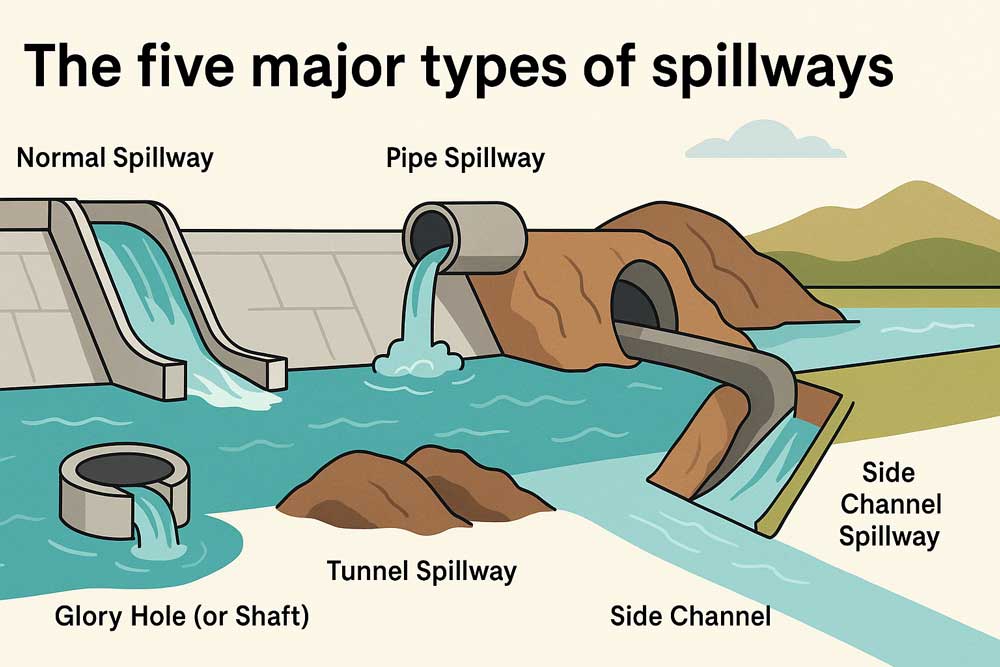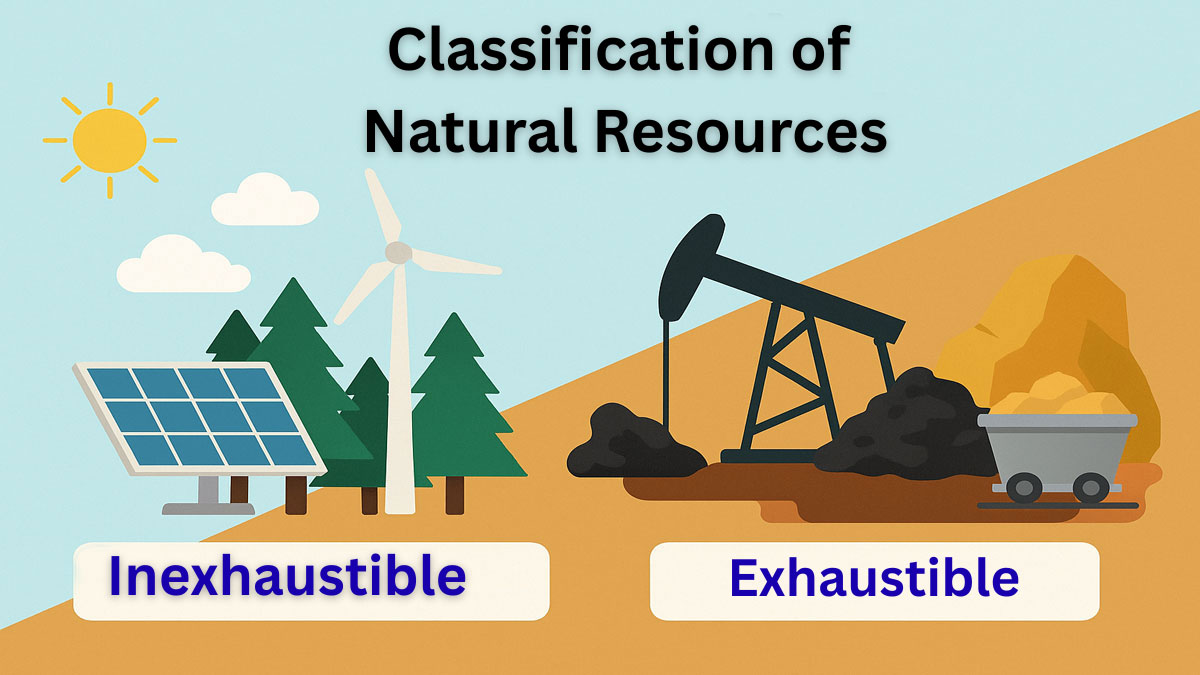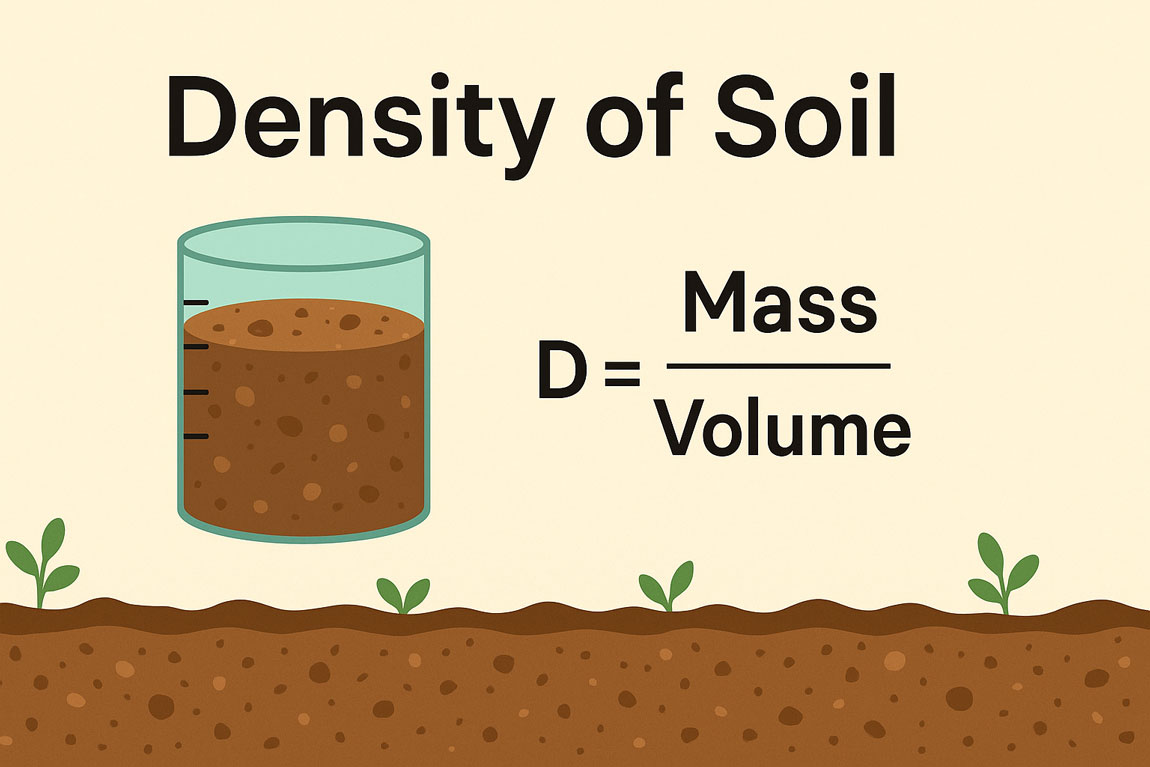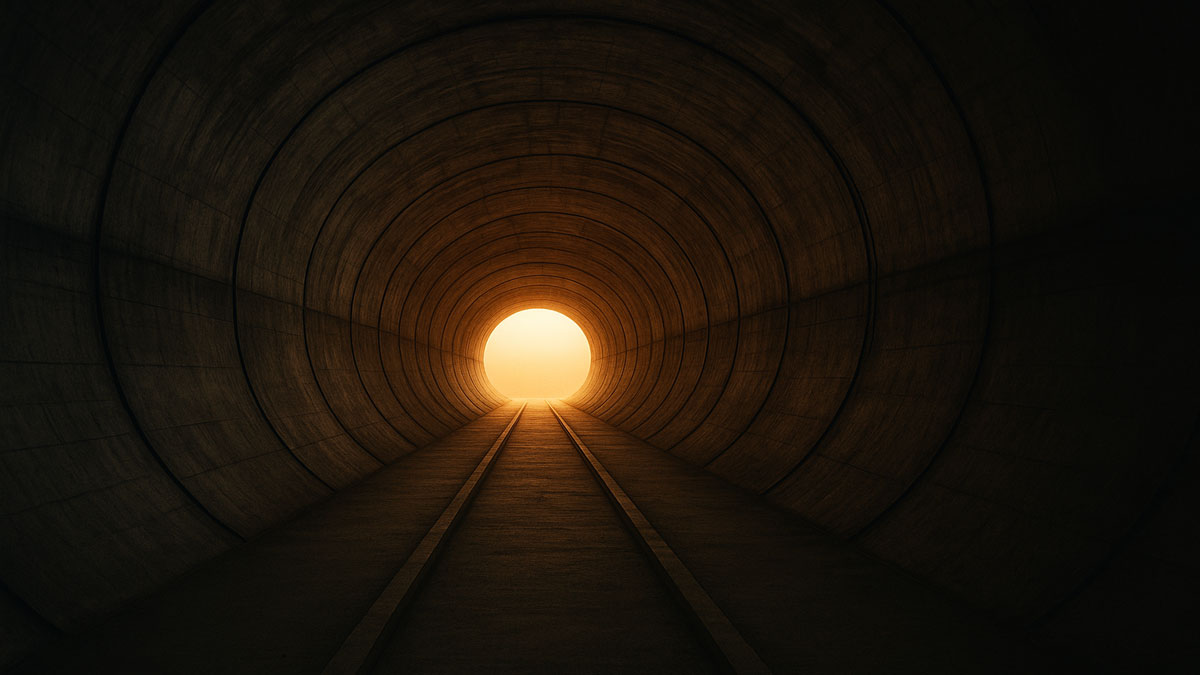Spillways discharge water from upstream to downstream and represent the most essential structures for dams to function properly (Fig. 1). They release flood water without causing damage to the dam. The spillway often forms an integral part of the dam, constructed either at the center or along the side of the dam axis.
In some dam projects, especially earth dams, engineers locate the spillway separately, outside the dam body. A spillway consists of three parts. The head structure acts as the water inlet and includes guide walls and a bulkhead. The discharge structure carries the flow from the upper reaches to the lower parts, while the terminal structure serves as an outlet discharging to the tailwater. The spillway can operate as free flowing or under controlled flow using a gated structure.

Fig. 1: Spillway with chute and discharge of water to the downstream part of the concrete dam
Major Types of Spillways:
The five major types of spillways are described in the following subsections.
Normal Spillway:
Fig. 1 shows a normal spillway. It is a concrete structure in the form of a channel at the upper part, followed by a steep chute for accelerating water flow. The chute is rectangular or trapezoidal in shape (cross section), designed for hydraulic efficiency, with training walls constructed on either side through which the reservoir water flows to the downstream valley (Fig. 2).
In a normal spillway, the flow of water is generally regulated by a gate at the crest of the dam, which is operated to control discharge during high inflow conditions or flood events.

Fig. 2: Sectional view of normal spillway showing chute and stilling basin
Pipe Spillway:
In a pipe spillway (Fig. 3), a pipe passes through the dam body, usually made of steel or reinforced concrete. For low-headwater projects, constructors lay the pipe along sections of the dam using a dig-and-cover method where the head difference between upstream and downstream remains small. This spillway type suits small dams or temporary structures where cost and simplicity matter most.

Fig. 3: Sectional view of pipe spillway showing flow of tailwater
Tunnel Spillway:
A tunnel spillway (Fig. 4) includes a tunnel puncturing the upper end that serves as the intake, while the lower (almost horizontal) end discharges water into the river or downstream channel. It includes a gate chamber that allows free flow or pressurized flow based on hydraulic needs and reservoir conditions.
Engineers often adopt tunnel spillways in narrow valleys or rocky terrains where topographic or geological factors prevent surface spillways.

Fig. 4: Tunnel spillway from upper end into lower end with a sectional view of intake (X–X′)
Glory Hole (or Shaft) Spillway:
The glory spillway (Fig. 5) takes the form of a vertical or steeply inclined shaft. It allows water to flow freely or under pressure through the shaft into a horizontal conduit. The head structure can have a gate or remain ungated, depending on design and flow control strategies. This spillway, also called a “morning glory spillway,” suits high-head dams or sites with limited space, offering an efficient and visually distinct flood discharge method.

Fig. 5: Glory hole spillway with gate structure
Side Channel Spillway:
The side channel spillway structure (Fig. 6) is located towards the left or right abutment of the dam, usually on the flanks where topographic conditions are favorable. The upper and lower portions of the channel are joined by a chute for the regular and continuous flow of water from the reservoir to meet the main river at the downstream part.
The portion of the chute consists of an access channel, a head structure in the form of a trough that helps guide the flow. The head structure is a weir, generally broad-crested, designed to maintain stable overflow conditions.
In an ungated chute, the weir structure is designed with a curvilinear crest to ensure specified discharge, even under varying flow conditions, making it suitable for consistent and automatic spillway operation.

Fig. 6: Channel spillway: (a) plan of a side channel spillway; and (b) cross section along x–x
Conclusion:
Spillways play a critical role in safely managing excess water in dam systems. Each type of normal, pipe, tunnel, glory hole, and side channel serves a unique purpose based on site conditions and design needs. Choosing the right spillway ensures dam safety, efficient water flow, and long-term structural stability.






